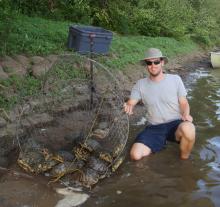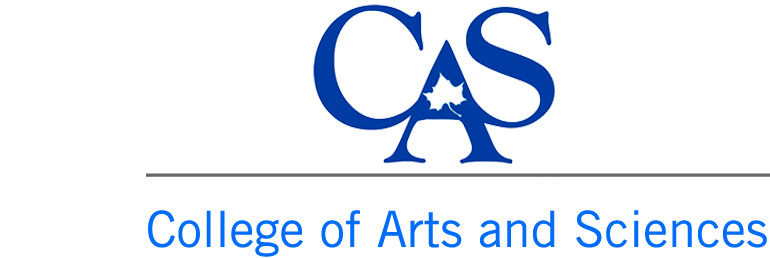You are here
Gooley, Aaron

Aaron C. Gooley
Assistant Professor
Ph.D., Southern Illinois University Carbondale
Phone: 812-237-4520
E-mail: aaron.gooley@indstate.edu
Office: Science Building 273
Research Interests: wildlife ecology & conservation; mammalogy; herpetology; ecotoxicology; apiology
Dr. Gooley is a wildlife ecologist who is broadly focused on the conservation of small mammals, reptiles, amphibians, and pollinators. His lab uses field studies to 1) identify and investigate novel ecological questions, 2) develop and test new methods for the conservation of imperiled species, and 3) investigate the impacts environmental stressors on pollinators and other wildlife. Research in Dr. Gooley’s lab has a strong field component in addition to collaborative laboratory components that integrate the field of ecology with ecotoxicology and analytical chemistry.
Selected Publications
Gooley, Z.C., and A.C. Gooley. 2021. Metabolic effects of anesthetics (cold, CO2, and isoflurane) and captivity conditions in isolated honey bee (Apis mellifera) foragers under different ambient temperatures. Journal of Apicultural Research. https://doi.org/10.1080/00218839.2021.1950994
Gooley, Z.C., A.C. Gooley, and J.D. Reeve. 2021. Neonicotinoid-contaminated diet causes behavior changes in forager honey bees (Apis mellifera) that may reduce colony survival during late fall. Journal of Apicultural Research 60(5):726-733. https://doi.org/10.1080/00218839.2021.1908739
Gooley, Z.C., and A.C. Gooley. 2020. Exposure to field-realistic concentrations of imidacloprid at different ambient temperatures disrupts non-flight metabolic rate in honey bee (Apis mellifera) foragers. Bulletin of Insectology 73(2):161–170.
Gooley, A.C., R.D. Bluett, and E.M. Schauber. 2019. Evaluating large-scale reintroductions of a locally imperiled rodent. Southeastern Naturalist 18(4):571–588. https://doi.org/10.1656/058.018.0409
Gooley, A.C., and E.M. Schauber. 2018. Pursuing packrats: An evaluation of noninvasive detection methods for Neotoma. Wildlife Society Bulletin 42(4):701–705. https://doi.org/10.1002/wsb.929
Gooley, Z.C., and A.C. Gooley. 2018. Assessment of three SPE cleanup sorbents efficiencies for determining neonicotinoid insecticides and selected metabolites in honey bees and bee pollen. Separation Science plus 1:627–635. https://doi.org/10.1002/sscp.201800105
Gooley, Z.C., A.C. Gooley, and R.D. Fell. 2018. Relationship of landscape type on neonicotinoid insecticide exposure risks to honey bee colonies: A statewide survey. Journal of Economic Entomology 111(6):2505–2512. https://doi.org/10.1093/jee/toy284
Gooley, A.C., and E.M. Schauber. 2018. Status of eastern woodrats in isolated remnant populations following genetic augmentation and habitat disturbance. Southeastern Naturalist 17(2):327–344. https://doi.org/10.1656/058.017.0215
Bluett, R.D., and A.C. Gooley. 2018. Distribution of the smooth softshell (Apalone mutica) in Illinois. Transactions of the Illinois State Academy of Science 111:5–10.
Gooley, A.C., R.D. Bluett, and D.A. Woolard. 2016. Trachemys scripta elegans (red-eared slider) and Graptemys geographica (northern map turtle). Hybridization. Herpetological Review 47(4):657–659.
Whiles, M.R., W.T. McDowell, and A.C. Gooley. 2013. Hemidactylus turcicus (Mediterranean gecko). Herpetological Review 44(1):107.
Gooley, A.C., and T.K. Pauley. 2013. Eastern Spadefoots (Scaphiopus holbrookii) and other herpetofauna in an industrial fly-ash disposal site in Southern Ohio. Ohio Biological Survey Notes 4:1–5.
Poole, A.K., B.A. Novosak, A.C. Gooley, D.M. Ing, R.D. Bluett, T.C. Carter, and G.A. Feldhamer. 2013. Reintroduction of the eastern woodrat (Neotoma floridana) in southern Illinois. Southeastern Naturalist 12(1):1–10. https://doi.org/10.1656/058.012.0101
Gooley, A.C., H.J. Stanton, C.J. Bartkus, and T.K. Pauley. 2011. Occurrences of Aquatic Turtles along the Ohio, Great Kanawha, and Little Kanawha Rivers, West Virginia, with emphasis on Graptemys ouachitensis and G. geographica. Ohio Biological Survey Notes 3:21–28.
